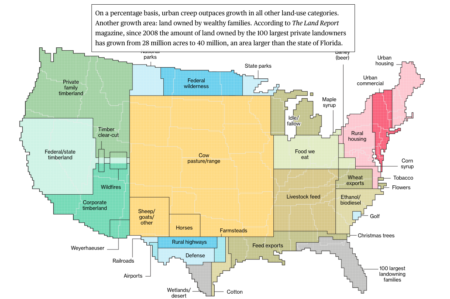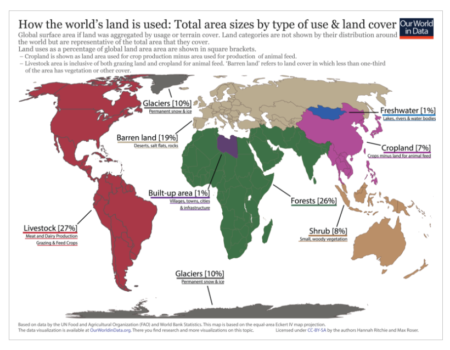Speaking of cool threads, there’s also this from the indefatigable Megan Lynch from the annual meeting of the National Association of Plant Breeders, on a crop that’s responsible for the livelihoods of increasing numbers of people in places like California, and some people think for civilization itself.
Feedlots
Nibbles: Carrot breeding, BIEN, Protected areas databases, Brazilian genebanks, Endangered coconut genebank, DSI, ABS, Climate pix, Botanical pix double, Potatoes galore, Pandanus language, Archaeological double, Palestinian seed saving
- Putting the polyacetylene back into carrots.
- The Botanical Information and Ecology Network gets an upgrade. Any CWRs among its 18,844,855 more observations?
- And any is protected areas? This will tell how well they’re managed. Mash up with this spatial database on indigenous lands?
- Otherwise, there are genebanks, though not enough in Brazil, apparently.
- And not always safe.
- What to do with Digital Sequence Information? Would be nice to be clear on what it is.
- ABS broken down by ISF. And the CGIAR. Not DSI though.
- Need climate visuals? Well, who doesn’t.
- The Columbian Exchange has visuals also.
- And the Royal Horticultural Society too.
- Speaking of Columbian Exchange: frites. And Vavilov, chefs, etc.
- Speaking about nuts in PNG. Comment by Jim Croft, who would know: “Except the species illustrated is the widespread oceanic strand species, Pandanus tectorius, not the endemic highland crop ‘karuka’, Pandanus julianettii.”
- 5000-year-old brewery in Egypt.
- 14,000-year-old bread.
- Fast forward 14,000 years.
Brainfood: African rice domestication, Barley evaluation, Al & sorghum, Potato seed systems, Yield trends, Arachis resynthesis, Potato breeding, Lupinus evolution, Helianthus invasiveness, Wild cassava, Beaked maize return, Amaranth breeding, Vegetables, American dogs
- The Rise and Fall of African Rice Cultivation Revealed by Analysis of 246 New Genomes. Domesticated in northern Mali as a result of the decline of wild species due to the drying of the Sahara.
- Unlocking historical phenotypic data from an ex situ collection to enhance the informed utilization of genetic resources of barley (Hordeum sp.). Don’t throw away that historical data from regenerations.
- Exploiting sorghum genetic diversity for enhanced aluminum tolerance: Allele mining based on the AltSB locus. It’s more prevalent in guinea sorghums.
- Unearthing unevenness of potato seed networks in the high Andes: a comparison of distinct cultivar groups and farmer types following seasons with and without acute stress. Potatoes are not just potatoes. And farmers are not just farmers.
- Global patterns of crop yield stability under additional nutrient and water inputs. Higher variability in yield expected under higher fertilizer inputs.
- Segmental allopolyploidy in action: Increasing diversity through polyploid hybridization and homoeologous recombination. Domesticating peanuts, the right way this time.
- Applications of New Breeding Technologies for Potato Improvement. Humble no more?
- Pleistocene glacial cycles drive isolation, gene flow and speciation in the high‐elevation Andes. In Lupinus, phylogeny does not recapitulate orogeny.
- Evolution of invasiveness by genetic accommodation. In a crop wild relative, no less.
- Manihot takape sp. nov. (Euphorbiaceae), a new tuberous subshrub from the Paraguayan Chaco. A crop wild relative too.
- Back to beaked: Zea mays subsp. mays Rostrata Group in northern Italy, refugia and revival of open-pollinated maize landraces in an intensive cropping system. Title of the week. Alternative: Polenta Power.
- From zero to hero: the past, present and future of grain amaranth breeding. Runner up.
- Issues and Prospects for the Sustainable Use and Conservation of Cultivated Vegetable Diversity for More Nutrition-Sensitive Agriculture. Still neglected.
- The evolutionary history of dogs in the Americas. They came over from Siberia with people, rather than evolving from local wolves, but all that’s left of them is a cancer.
Brainfood: Phenotyping, Genotyping, Perennial Hordeum, Communicating PGRFA, Participatory breeding, Sri Lankan homegardens, Traditional Slovak landscapes, Ecosystem services, LWR double, African cassava, Labelling fish
- Translating High-Throughput Phenotyping into Genetic Gain. More to it than cool drones. Although those are not to be sneezed at.
- A guide to sequence your favorite plant genomes. Someone may already have what you need.
- Towards the Development of Perennial Barley for Cold Temperate Climates—Evaluation of Wild Barley Relatives as Genetic Resources. H. bulbosum is the best bet. So far.
- Communicating plant genetic resources for food and agriculture to the public — A study of grant-receivers with demonstration-projects in the Danish Rural Development Programme. It can be done.
- Farmers’ participatory selection of new rice varieties to boost production under temperate agro-ecosystems. It can be done.
- Assessing the Impacts of Agrobiodiversity Maintenance on Food Security Among Farming Households in Sri Lanka’s Dry Zone. Help the poor.
- Contribution of Traditional Farming to Ecosystem Services Provision: Case Studies from Slovakia. Traditional systems more diverse and balanced in provision of ecosystem services than intensive modern systems. The problem is that pesky production service. Yeah, but about that…
- Bright spots in agricultural landscapes: Identifying areas exceeding expectations for multifunctionality and biodiversity. Small is beautiful.
- Why should we save the wild relatives of domesticated animals? Because we can.
- Tracking trends in the extinction risk of wild relatives of domesticated species to assess progress against global biodiversity targets. And because we should.
- Single nucleotide polymorphism (SNP) diversity of cassava genotypes in relation to cassava brown streak disease in Mozambique. Some Mozambican landraces are very similar to resistant Tanzanian landraces.
- Generic names and mislabeling conceal high species diversity in global fisheries markets. DNA barcoding reveals that 300 “snapper” samples are in fact 67 species from disparate fisheries. Use Latin names, folks!

